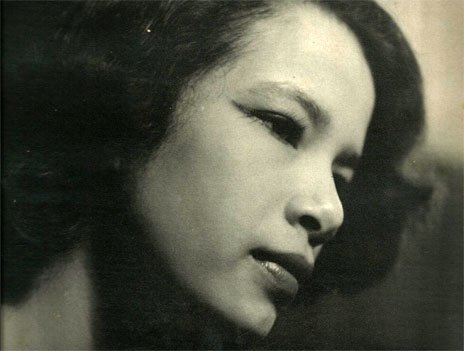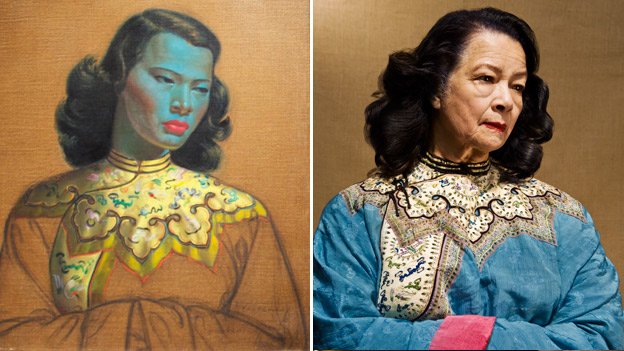
Earlier this year Vladimir Tretchikoff’s portrait Chinese Girl, often referred to as The Green Lady, was sold for almost £1 million ($1.5 million) at auction in London.
This is the story of Monika Pon-su-san (born Sing-Lee), who modeled for one of the most popular prints ever made:
One day in 1950, a curly-haired stranger walked into my uncle’s laundry in Cape Town, where I worked.
He stood there as I served a customer, his eyes fixed on me the whole time. He only spoke when we were alone together in the shop.
“Hello!” he said. “I’m Tretchikoff. I’d love to paint you.”

At that time Vladimir Tretchikoff wasn’t very famous but by chance I had read about him in a newspaper just the Saturday before.
So I was a bit nervous, but I said yes. He picked me up after work and took me back home.
I was given his wife’s gown to put on. It was silk chiffon – beautiful, beautiful stuff. It wasn’t yellow like in the painting – that was his own invention.
A lot of people ask me: “What is that stern look you had on your face? What were you thinking about?” And I always say: “Well you know, one gets tired sitting and just looking.”

All the time I was thinking about Tretchikoff’s life. Because he had had a miserable life – during the war he’d been on a boat for three weeks without food, after his ship was bombed. Then he was imprisoned by the Japanese.
He had lost contact with his wife and daughter. Thinking they were dead he took a lover, but they weren’t dead, and as fate would have it they went to Cape Town, which is where he ended up too. So they got back together again.
I liked him very much. He was a funny man – we always laughed a lot. In all, I was paid six pounds and five shillings for the work.
He had a class of about 20 pupils. All the time I was sitting for him they could see me but I was never allowed to see the painting – it always had its back to me.
I would nag him: “What are you going to call it?” He said that a name would come to him later on. It was only at the end of the six or 10 weeks – I can’t remember exactly how long it took – on the night his exhibition opened that he said it was called Chinese Girl. I thought that was very ordinary.
And when I saw the painting I was so shocked. I thought I looked like a monster from a horror film. I pulled an ugly face and said: “Ugh – green face!”
Right away people started to recognize me. I remember going to a supermarket and a woman shouted: “Look at this girl! She looks just like the painting!”
I decided I had to buy a print. By the time I went to him Tretchikoff had run out, so he gave me one he had used in London when he was on tour. I’ve got it in my lounge.
There was a block of flats in Cape Town, filled with artists. The man on the ground floor was a sculptor and one day he asked Tretchikoff: “Can I borrow your model?” He wanted to cast a bronze of my face. But Tretchikoff said: “Certainly not!”
I had so many modelling offers but – stupid me – I went and got married and had children, so that was that. I didn’t socialize much, with five children to look after, so I was hidden away from Cape Town’s artists. The offers stopped coming.
I was so disappointed to miss the auction recently. My daughters said to me: “The painting’s sold! The painting’s sold!” And when I found out it had gone for £1 million, I jumped up and down, up and down!
Everybody’s fascinated by that painting. I don’t know what it is about it really.
One of my daughters – the second youngest, who is supposed to look like me – said: “I wish I had a lot of money and then I would buy that painting and keep it forever in my own house.”
When I was asked by a journalist if I would let another artist paint me at this moment in time, I said: “No… but if Tretchikoff were alive, I would let him paint me again.”